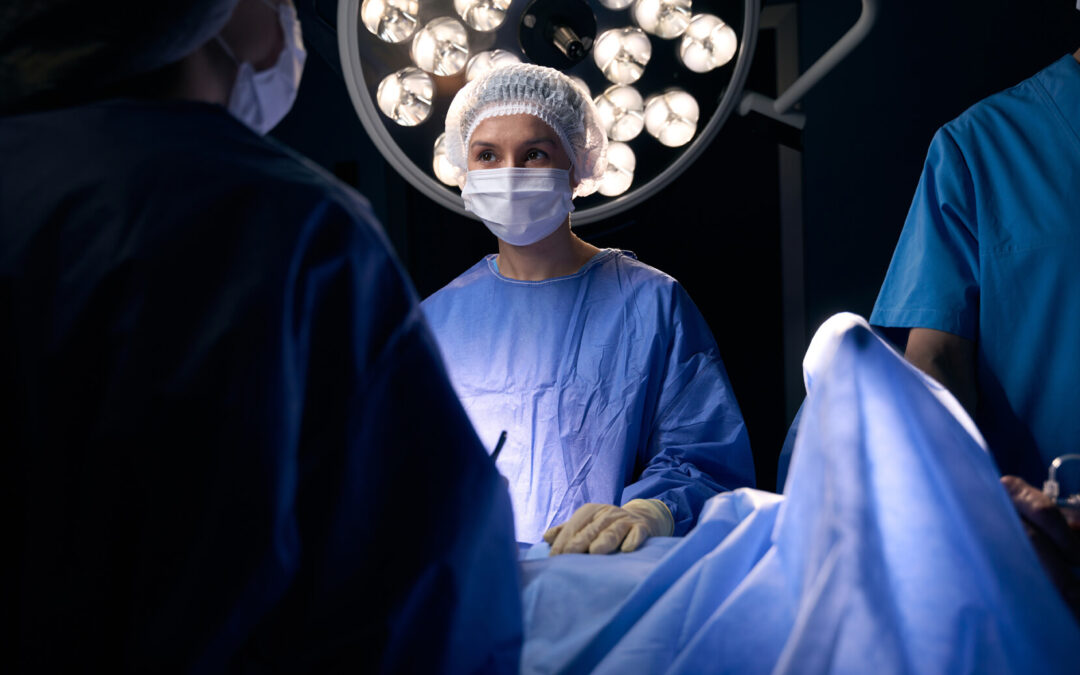Behind the scenes of the field of Interventional Cardiology lies an often-overlooked danger: radiation exposure. While Echocardiographers and Electrophysiologists play vital roles in diagnosing and treating cardiovascular conditions, they face a serious occupational hazard. As they often stand near both the radiation source and the patient, Echocardiographers, in particular, get high doses of scatter radiation, putting them at a higher risk than other medical professionals. This increased radiation exposure poses potential health risks and raises concerns about the long-term effects on these medical practitioners.
Radiation Risk for Interventional Echocardiographers
During Echocardiography procedures, Interventional Echocardiographers are required to be in close proximity to the radiation source and the patient, which makes them the primary recipients of scatter radiation. Studies have shown that Interventional Echocardiographers are exposed to much higher doses of radiation, particularly at the head level, compared to interventional cardiologists and sonographers.
In fact, a study in 2022 found that they received a significantly greater head-level radiation dose than Interventional Cardiologists. In 25% of cases, the dose they received was more than 20 mSv, which is up to 10 times higher than other interventional staff.

JAMA Network Open. 2022; 5(7):e2220597. doi:10.1001/jamanetworkopen.2022.20597. Abbott.
This higher radiation exposure poses serious health risks for Echocardiographers, as well as other Cath lab workers. Prolonged exposure to radiation can lead to adverse health effects, known as the 3 Cs of scatter radiation. These 3 Cs are an increased risk of cancer, cataracts, and cardiovascular disorders.
Furthermore, the occupational risks associated with higher radiation doses may have additional impacts on female cardiologists, as this radiation could impact future childbearing abilities. Another study found high absorbed radiation dose rates in the waist and lower body of interventional echocardiographers, much higher than in the chest. This puts the ovaries at risk for radiation exposure for young female doctors in their childbearing years.

JACC: Asia. 2023 Apr, 3 (2) 301–309. Body Surface Radiation Exposure in Interventional Echocardiographers During Structural Heart Disease Procedures. Kotoku et al.
The concerns about potential harm to a developing fetus from radiation exposure may deter these professionals from choosing this evolving imaging subspecialty that could otherwise benefit from their expertise.
What Can Be Done?
There needs to be a greater awareness about radiation safety, as well as active measures implemented in Cath labs to mitigate radiation exposure and protect echocardiographers and other Cath lab professionals.
Personal protective equipment (PPE) plays a crucial role in reducing radiation exposure. This comes in the form of lead aprons, thyroid collars, lead glasses, and lead gloves, which all provide an additional layer of protection for medical professionals. Moreover, proper imaging techniques and staff positioning can help optimize radiation safety during procedures.
One effective step in reducing radiation is the installation of lead shields in cardiac intervention suites. These shields provide an effective barrier against scatter radiation and significantly reduce the radiation dose received by medical professionals. However, these solutions, such as ceiling suspended lead screens or protective lead curtains, are not easy to set up as they may limit the location and movement of the C-arm or simply cannot be mounted due to product specifications.
The EggNest Solution
Egg Medical’s EggNest is a solution that aims to deliver scatter radiation protection without compromise. The EggNest is a radiation protection device specifically designed for use in Cath labs and helps reduce radiation exposure for echocardiographers and electrophysiologists by an impressive 97%. The EggNest also reduces overall scatter radiation for all personnel around the table by at least 91%.
As it is designed with optimal imaging and C-arm motion in mind, the EggNest can be easily utilized in the Cath lab without disrupting workflow or compromising patient access. Unlike other lead curtain solutions, the EggNest does not limit the location and movement of the C-arm due to its unique design.
The EggNest provides an effective and practical means of protecting medical professionals while allowing them to continue providing quality patient care. By prioritizing radiation safety, the EggNest Radiation Protection System mitigates the occupational risks associated with radiation exposure and promotes a healthier and safer working environment for all healthcare professionals involved in cardiac interventions.
To find out more about EggNest and how it can benefit the Echo Team in your Cath lab, sign up for a quick 30-minute EggNest™ virtual demonstration today!

